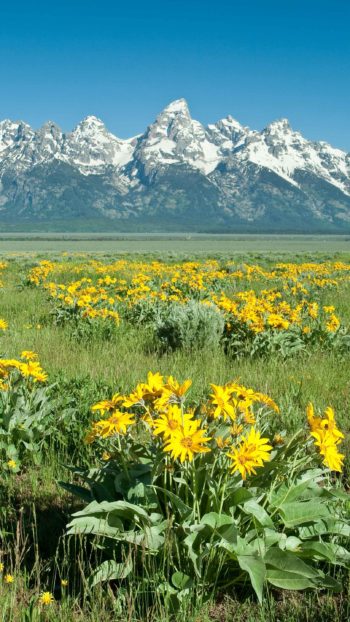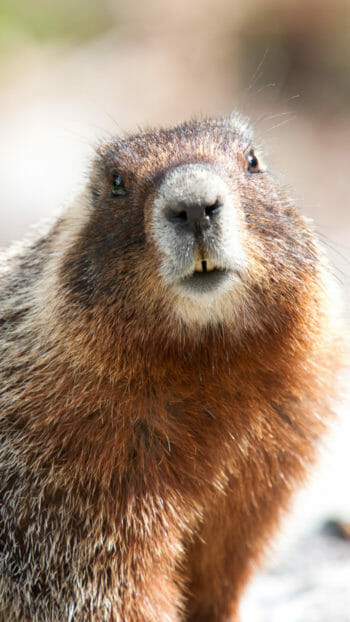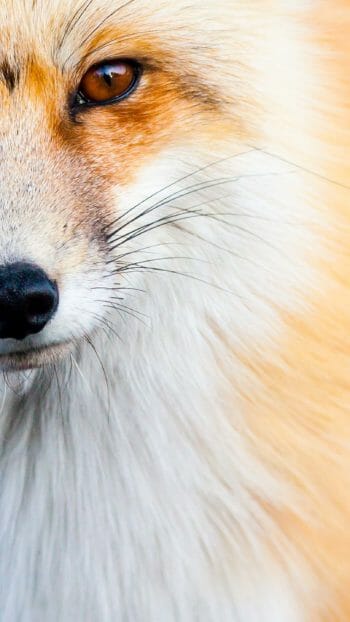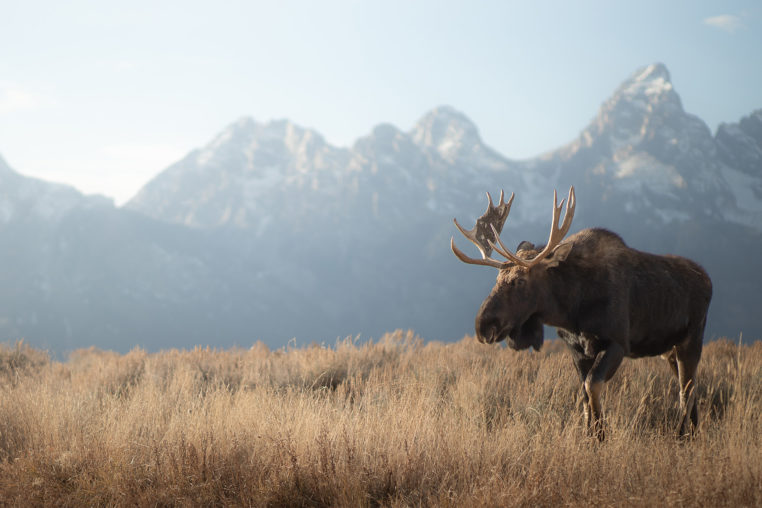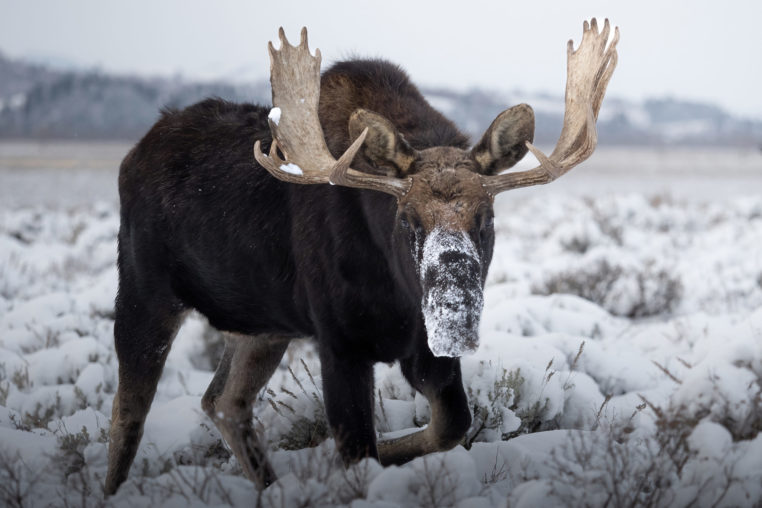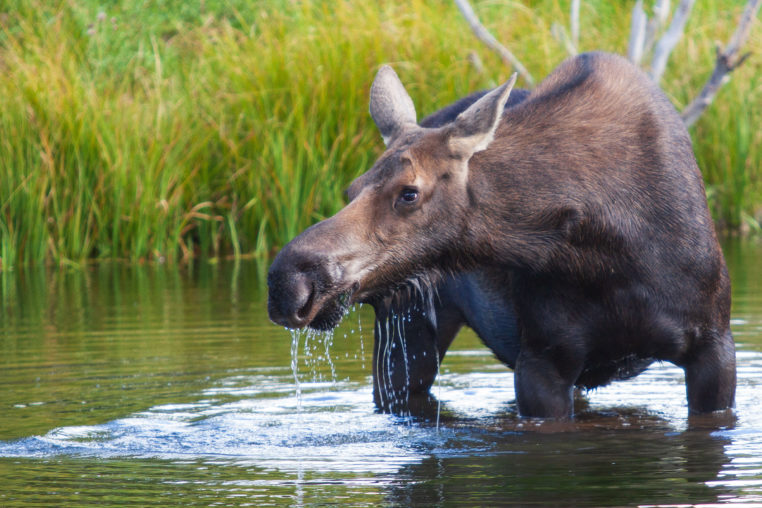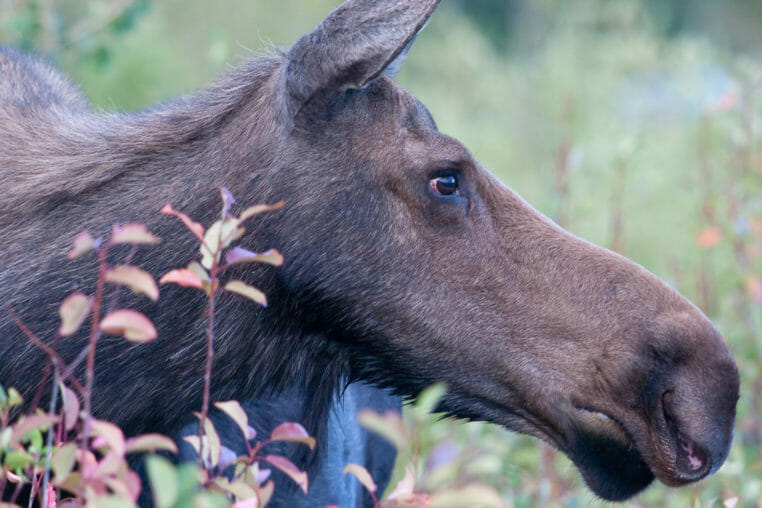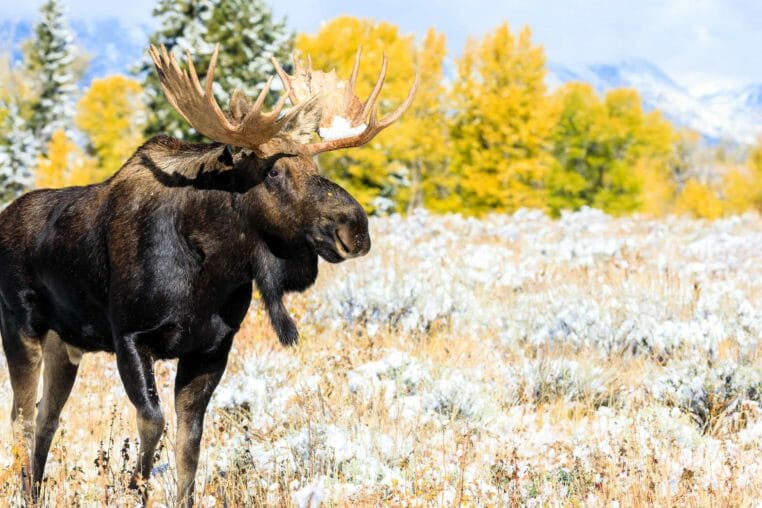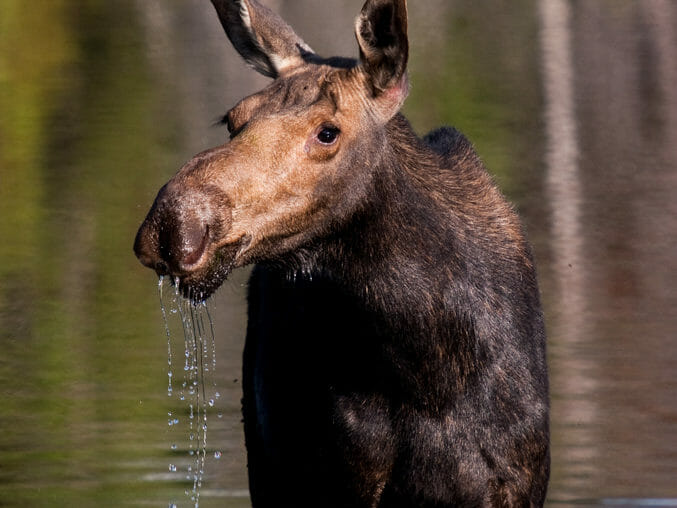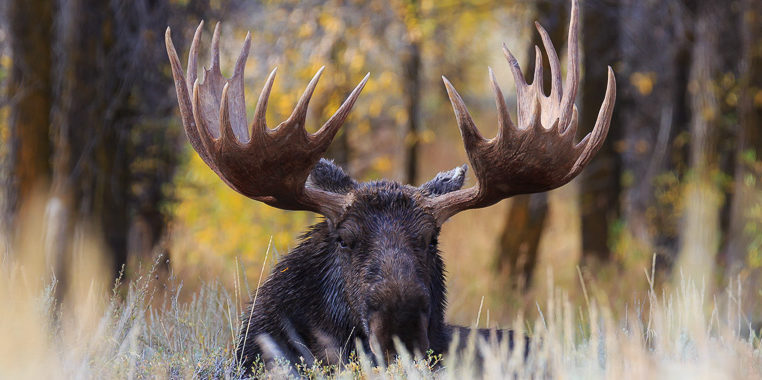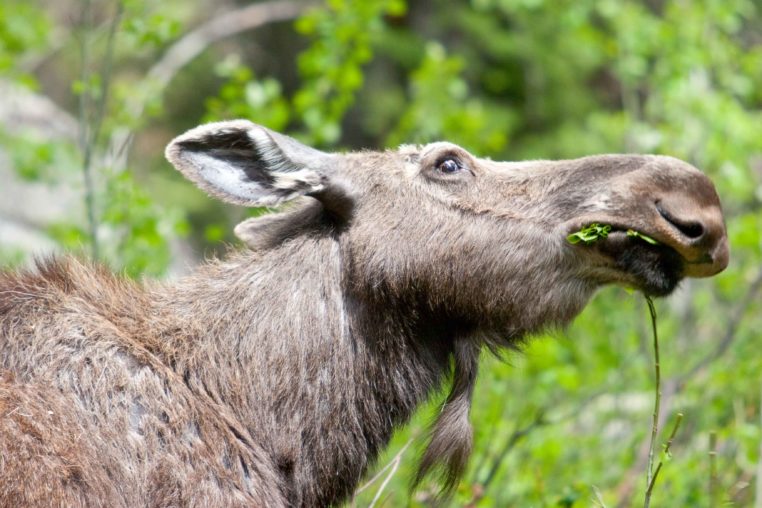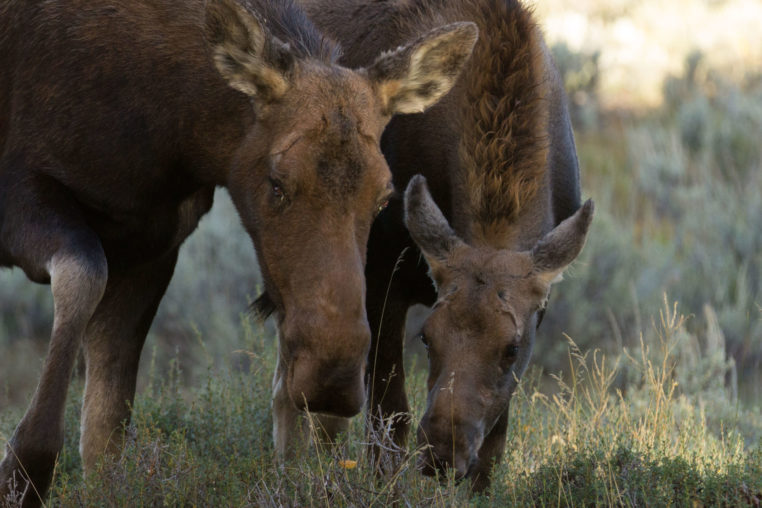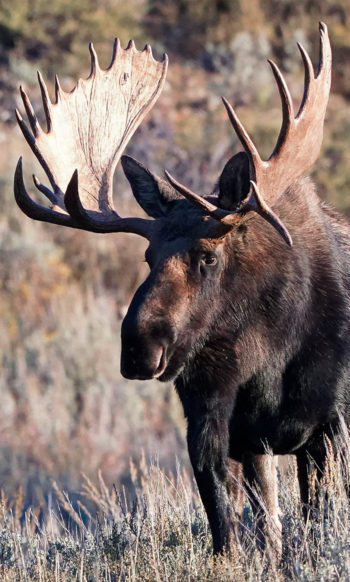
(Alces alces)
Towering, solitary, and unmistakably majestic—moose are true icons of the North. Built for the cold, these giants of the forest thrive in northern climates across the globe. Their thick, dark coats absorb precious sunlight, and their naturally high body temperature—often reaching 102°F—helps them endure frigid winters. But those same adaptations that make them winter warriors also limit where they can live. Moose simply aren’t built for the heat, which is why you’ll only find them in cooler, northern territories where snow, shade, and shallow waters are part of everyday life.
Wildlife Viewing
- Grand Teton
- Jackson Hole
Book Online
Watch For Wildlife On These Tours
About
Moose are the largest member of the deer family, and their staggering size is the first thing anyone notices about them. There are eight subspecies of moose found around the world with four of those found in North America. The moose found in the Greater Yellowstone Ecosystem is known as the Shiras moose and is the smallest of the four. While the smallest, these moose can still stand at 6 feet at the shoulder and weigh up to 1,000lbs!
Giant of the North
Moose are found only in northern regions around the globe. They have a higher body temperature (up to about 102° F) with dark coats that absorb more sunlight and warmth. These adaptations help them to withstand very cold temperatures, but consequently they can not handle hot climates, limiting their range to northern territories.
Particular Diet
Moose, unlike elk and bison, are not grazers, meaning they do not eat grass. They are “browsers”, so they feed on leaves and branches of woody plants such as willow, aspen, and mountain ash. Because these plants are not a good source of sodium, moose also feed on aquatic plants such as duckweed, pondweed, and algae for more salt. This is why we often see moose hanging out in the water. Browse is not as abundant as grass, so it does not support large numbers of animals at a time. Moose are mostly solitary animals because of their food source.
Aquatic Swamp Donkey
You may hear moose affectionately called “swamp donkeys”, because they spend so much time in the water that they are considered semi-aquatic! They have special adaptations for the water including muscles in their nostrils that allow them to close their noses and continue feeding while they are completely submerged. They are excellent swimmers, clocking speeds at 6 mph- faster than Olympian Michael Phelps! What’s more impressive is that they can keep up this speed for up to two hours. Moose love the water for more than just their food, it also helps them to keep cool in the summer heat.
Moose Rut
Fall is one of the most exciting times in the region. The leaves change color, and the animals are in rut! This is another term for a breeding season. Throughout the spring and summer, bull moose grow their antlers in preparation for the rut. Antlers are solid bone growing from the skull, up to an inch every day! While they’re growing, they are covered by a layer of skin that is loaded with blood vessels to deliver a direct supply of nutrients to facilitate fast growth. They are said to be “in velvet” during the growth stage because of the appearance of the fine fur on the antlers.
Usually solitary, moose will gather in small groups during the rut. There will typically be one large bull with two or three females. Other bulls will challenge for the right to mate, leading to displays of dominance that can lead to vicious fights.
Calving
Around June, pregnant females will give birth to their calves. Moose calves are born a rusty orange color, developing their dark adult coat over the next few months. Moose mothers are extremely protective of their young and will aggressively fight off predators. Keep this in mind while viewing wildlife, and keep your distance from moose!
Best Time and Place to see Moose
The moose population is less than 100 in Yellowstone, so they are not a common sight in this park. Grand Teton National Park has a denser moose population of around 400 and plenty of prime habitat. Look for them around ponds, rivers, and streams around dawn and dusk during the summer months. October is the moose rut, so they are very active and visible from the roadsides. Keep your distance! Moose can be aggressive and maintaining 25 years is park law for a reason. After the rut and as winter moves in, moose are very prevalent in open sagebrush habitats as they graze on taller vegetation that doesn’t get covered by the snow.
FAQs
What do moose eat?
Moose are “browsers”, so they feed on leaves and branches of woody plants such as willow, aspen, and mountain ash. Moose also feed on aquatic plants such as duckweed, pondweed, and algae for more salt.
How big can moose get?
The moose that reside in Grand Teton and Yellowstone National Park are the smallest subspecies, but they can still stand at 6 feet at the shoulder and weigh up to 1,000lbs!
Where can I find moose?
Moose love spending time in water, so ponds, streams, marshes and lakes are great places to look. They don’t do well in the heat, so early morning around dawn or evening around dusk is the best time to go looking for them. Jackson Hole Wildlife Safaris is the best option for finding a moose in Grand Teton National Park as our guides are familiar with their habits throughout the year.
What is the plural of "moose"?
The plural of “moose” is… “moose”! It is a word that comes from the Algonquian language, a native tribe who lived along the Atlantic Coast and in the interior regions along St. Lawrence River and around the Great Lakes. Its origins mean “twig eater” or “he strips off”, referring to their eating habits. Because it is not an English word, it does not follow English grammar rules!
Further Reading
Grand Teton Tours for Every Season
Sept 15, 2022
Just south of Yellowstone National Park is a geological treasure of mythical proportions. Where jagged alpine peaks pierce wide open skies, where rich valleys harbor a plethora of wildlife, where people journey from all over the world to witness such a wondrous natural landscape.
A Month by Month Guide to Grand Teton National Park
Jun 21, 2024
Each and every month has something special to note, meaning that no matter what season you visit will be a special time. Use this guide to determine what time of year aligns best with what your interests and goals are.

